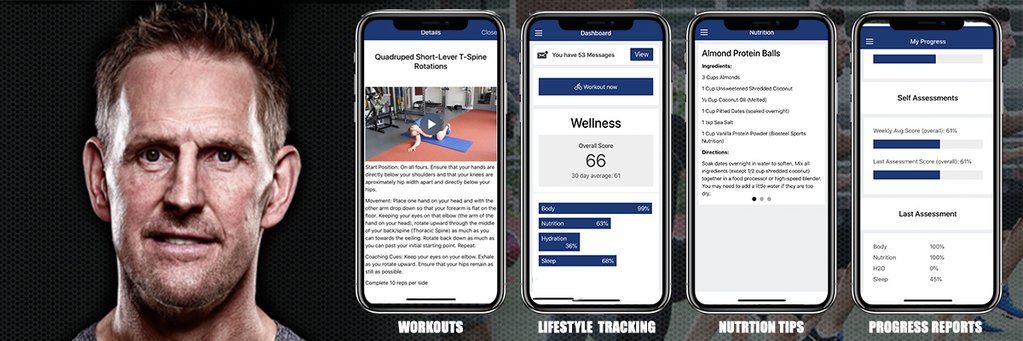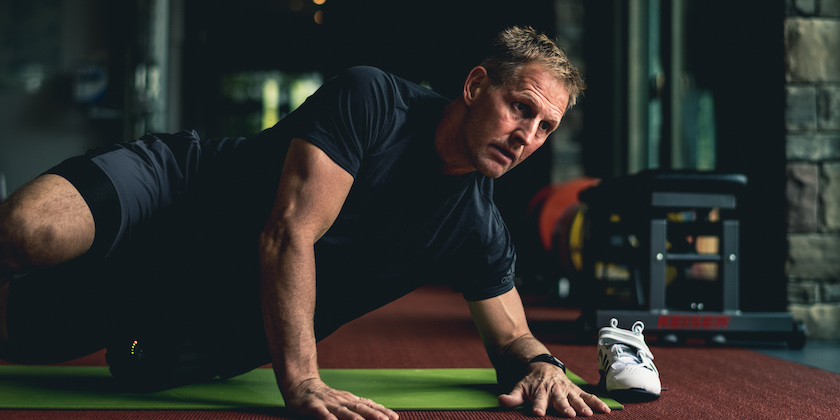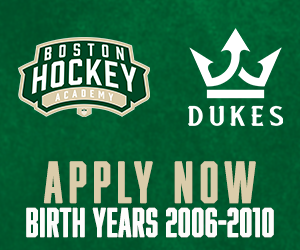Over the coming weeks Neutral Zone readers will gain valuable training insights from one of hockey’s premier athlete development coaches and former NHL player – Gary Roberts.
Roberts will contribute more information to Neutral Zone readers. Click here to access Gary’s at-home training programs delivered on the Gary Roberts training app. Neutral Zone readers earn 10% discount when applying Neutral Zone promo code NZ10 at checkout. Athletes living in America should note, the Canadian dollar is 40 cents to the American dollar! This means close to 50% savings!!!
“There is a lot of information out there,” Roberts said. “That’s why I do what I do. I believe we have the right info and the recipe to progress kids properly and give them what they need at certain stages of development. I love what we do. We have an amazing team.
“The game was changing even when I was playing. Things got to be more dynamic and you had to change direction and hold onto the puck to create space and do that at a high speed. (Sidney) Crosby had a huge impact on the game with that. That’s where we’ve gone in our training programs. We used to run a lot and now we can do everything in a 10-yard square with cones. We believe we have the right recipe with our program and it’s not just training, we give young players a total guide to nutrition and recovery strategies. We believe we offer a total package.”

As a player, Gary was known for his grit, competitive nature and ability to contribute in clutch moments. He hoisted the Stanley Cup in 1989, at the age of 23 yeards old, with the Calgary Flames and went on to score 438 goals add 472 assists and amassed 2,560 penalty minutes over his 20 plus year NHL career. Gary appeared in three All-Star games and won the NHL’s Bill Masterton Trophy in 1996.
Gary’s story is rare. After playing a decade of a punishing style of hockey in the NHL, he suffered a serious neck injury that forced him to retire from game in 1996. Faced with the realization that his career was over at just 30 years old, he went on a mission to find his way back. He sought out a team of experts who helped him realize that his rehabilitation and possible return would require a complete lifestyle change. Gary embarked on a steady recovery process and after a long absence from the game he loved, he returned to the NHL in 1997.
Over the last decade, Gary has worked with many NHL players to share his knowledge and experiences on how to prepare to play, rehabilitate from injury, and have a chance at longevity in the game. His philosophy is a lifestyle with each facet supporting and strengthening the other – FUEL effectively, TRAIN specifically, RECOVER efficiently to PERFORM optimally.
He works with some of the top players in the NHL, including Steven Stamkos and Connor McDavid.
“I went through a big challenge in my career, and we’ve taken all that experience and knowledge I gained from it and applied it to developing programs for younger players,” Roberts said. “The hope is that we’ve put a program together so that younger players don’t have to go through and face the challenges that I had to face.”
We asked Gary to talk about his philosophy and how it relates to the off-season in particular. Here’s what he had to say:
“Preparation is important all year round but the off-season offers something unique – an opportunity to make huge gains in strength, size, speed and endurance at a time when players have a reprieve from the demands of the regular season,” he said. “To truly maximize these gains and optimize your performance you need to pay close attention to more than just training properly because it’s as much about how you fuel your body and help it recover.”
FUEL
Sticking to the basics and developing good habits regularly is very important, but Roberts says that you can fine-tune your nutrition in the off-season to help assist recovery after all the hard work in the gym and on the ice.
In the app, Gary and his team give players a total guide to nutrition and recovery strategies as well as the types of fuel they should be putting into their bodies.
Protein
Protein is optimal for growth and repair of all tissues in the body.
Great sources of protein are …
– Poultry: chicken, turkey, eggs
– Red meat: grass fed beef, bison, lamb
– Wild caught or sustainable fish: salmon, trout, halibut
– Plant based sources: nuts/seeds, beans/legumes
– Quality whey isolate, collagen, bone broth collagen or vegan protein powder
Fiber-Rich Carbohydrates
Fiber will help with optimal digestion and slow down the release of glucose in your system giving you long lasting energy.
Great fiber-rich carbohydrats include …
– Abundance of fiber rich vegetables and fruits: sweet potato, broccoli, cauliflower, carrots, apples, pears, berries
– Whole grains: brown rice, quinoa, oats
– For additional fiber add: chia, flax seeds (preferably ground), oat bran, nuts/seeds, beans, lentils, peas
Healthy Fats
Fats are a source of energy and will help with decreasing inflammation and keep you fuller, longer.
Some healthy fat options include …
– Avocados
– Nuts/seeds
– Fatty fish: salmon, sardines
– Oils: extra virgin olive oil, flax oil, coconut oil
– Grass-fed butter or ghee
Color
This means eating a wide range of vegetables and fruits throughout the day to boost consumption of nutrients. And for an extra boost eat ones that are in season and, where possible, locally farmed.
Some great color options include …
– Green: dark leafy greens, brussel sprouts, green beans
– Red: beets, tomatoes, raspberries
– Purple/blue: wild blueberries, purple cabbage, eggplant
– Brown/white: banana, mushrooms, cauliflower
– Orange/yellow: sweet potato, yellow pepper, mango
TRAIN
The off-season is your opportunity to specifically focus on building the attributes so crucial to playing the game: strength, size, speed, and endurance.
These are the areas of focus that Roberts highlights as players head into a long off-season:
Corrective Exercise
The season can be intense and demanding on the body. It is crucial to work on correcting any imbalances that may have developed.
Mobility: Opening up commonly tight areas such as the hips or mid-back and shoulders can allow us to begin building a platform for muscle gain and will help you to utilize that strength when you do get back on the ice.
Core Activation: All athletic movement is tied to our core, and the ability to transfer energy from our lower to upper body depends on an athletic and stable center. Start on the floor with some ground-based core exercises (e.g., dead bugs, planks) that will warm you up properly and prepare you for strength training.
Muscular Activation: Repetitive movements can inhibit some muscles and cause others to become overworked. The early off-season is an excellent opportunity to focus on re-balancing those areas as we pair exercises with our Mobility and Core drills.
RECOVER
There is no performance without recovery. Recovery is crucial during the off-season to optimize work done in the gym and on the turf.
During the off-season, Roberts wants his atheltes to focus on developing a proper recovery routine including:
1. Prioritize sleep. Sleep is the most significant area of focus when it comes to optimizing recovery. Develop a good sleep routine by going to bed before midnight, limiting screen time in the evening, and creating a wind-down routine.
2. Develop a solid stretch/mobility routine. Take time to focus on the areas that need extra attention with stretching and soft tissue (foam rolling) work.
3. Manage stress. Exercise is physical stress, so it is vital to mitigate extra stressors to ensure better recovery. This could mean developing a deep breathing routine, taking a bath at night-time, or going for daily walks.
To get the most out of your off-season, you need to incorporate all three pillars of performance: Fuel, Train, Recover.”





